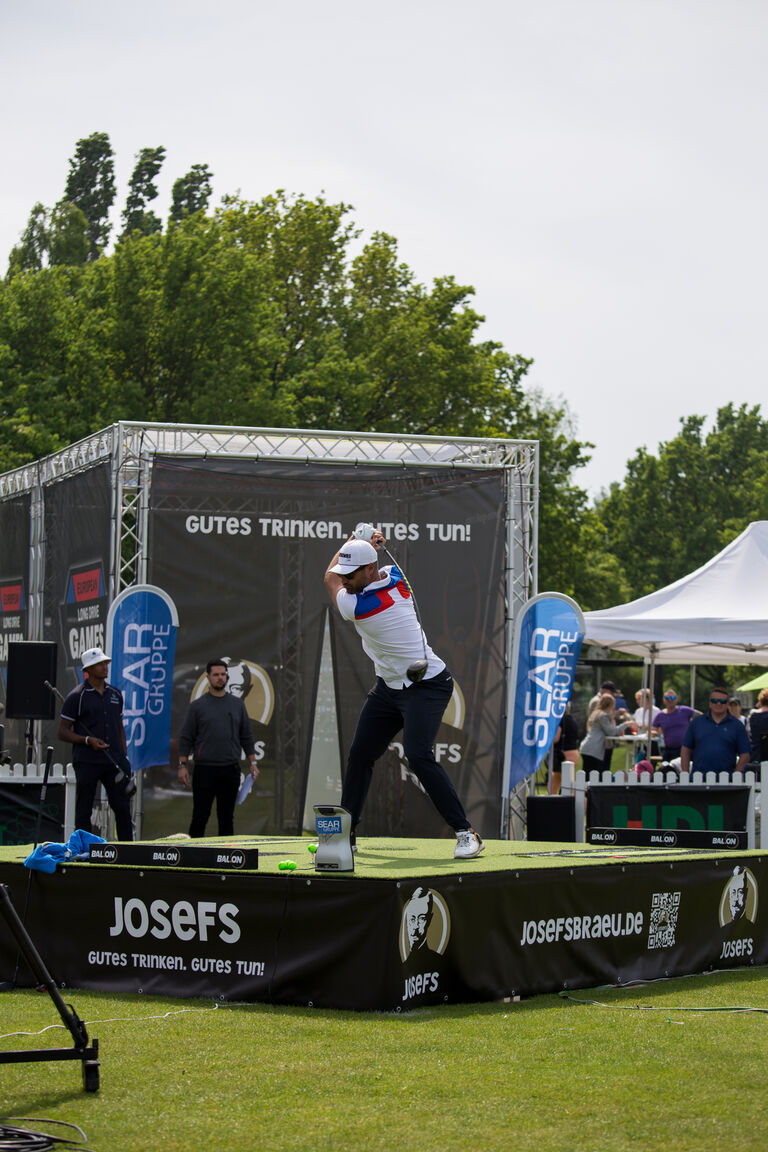Continental Long Drive Open Results
Josh Koch wins Continental Long Drive Open
Important lessons for classic golfers
Our first big event, the Continental Long Drive Open, presented by BAL.ON, is over. Josh Koch, a US athlete, snatched the trophy win with a hit of 403 yards or 368 m. The data we generated during training sessions and at the event offer insights that are relevant for classic golfers as well as competing athletes.
The tournament saw 62 players congregate from 13 nations, with Japan’s Taiga Taizawa undertaking the longest journey of over 12.000 km from Tokyo to the golf club of Burgwedel in Northern Germany. 1.774 visitors enjoyed feasts of long driving with an average yardage of 323 (equalling around 300 meters). The fastest drive of the day went to Sam Judah, who achieved a speed of 229,5 mph or 370 km/h – that is faster than a starting jet plane!
Out of all 2.622 balls hit, only 22,5% or a little more than every fifth ball stayed in play. That underlines just how big the challenge in long drive competition is: not only hitting the ball exceptionally long, but still within the boundaries of the grid.
Lessons for golf training – what can classic golfers learn from long drivers?
Seen with the eyes of a classic golfer, long drive athletes, with their typical jerky trigger moves and unusually wide body angles during the swing, can seem a little uncontrolled and loose. Yet a lot of what they do is in fact a meticulous generation of power. In that sense, it might pay to look a little closer at what long drivers do different and why.
Fast backswing, club held close to the body
The BAL.ON data show that nearly all LDO athletes create an exceptionally fast backswing. While classic golfers often go into backswing with a measured speed, or even a little languid, long drivers swing back almost explosively. Also, they keep the club close to the body in downswing. That keeps the moment of inertia down and allows for a larger angular acceleration of the club.
Unweighting while still in backswing
When the backswing is about to reach its end, long drivers make their body lighter for a brief moment – a technique called “unweighting”. The sudden bouncing down and back up gives their arms greater rotational force and hence more clubhead speed. If you are interested in unweighting, have a peek into our articles “Find your feet in golf” and “Whip it like a pro – the high art of pressure application”.
Fast pressure shift from trail to lead leg
Almost all athletes showed this characteristic pressure pattern: while their backswing was still in completion, they moved their center of pressure fast and wide from their trail leg to their lead leg. This shifting causes a huge torsion inside their bodies, which in turn results in massive torque, propelling the clubhead forward at lightning speed. This is where the BAL.ON app data come in especially handy, as our metric “Transition Timing” pinpoints this particular shift very accurately. If you want to learn more about it, read our article “Ready for the big shift – what transition means and how transition timing helps you shoot longer”.
Generate maximal vertical force
Vertical force is important because it correlates with clubhead speed. The ability to produce the utmost of vertical force during the golf swing is one of the most decisive factors on shot length. The data-based evidence is particularly striking here: long drivers reach almost double the values that are common for classic golfers. That means they bring almost twice as much vertical force to bear on their golf swing as compared to their classic cousins.
An improvement out of sheer technique
Of course, there are also particularities of the long drive scene that limit the usable transfer of methods to classic golf. The long drive tees are almost twice as high as in classic golf, and the club shafts are so flexible that classic golfers would be at a loss to handle them. Yet the good news here is that even if you cannot put in a similar amount of gym time as a typical long drive competitor, you have a very good chance to improve your golf swing. Honing technical details such as unweighting, a well-timed pressure shift or generating vertical force are achievable without an ounce of extra muscle mass. And BAL.ON as a training system can help you with very tangible feedback and results on the path of that improvement.
One last numeric gem from the long drive arena we sponsored: with a total yardage hit of 19.066 (174 km), the combined hitting distances span roughly the distance between GC Burgwedel and the city of Paderborn, home of the incumbent world champion Martin Borgmeier. If that isn’t a hint for the next bout, we don’t know what is.




